22 examples of cells and their characteristics
The cell is the most basic form of life that can exist. For example, the simplest organisms are bacteria and archaea, single-celled beings that can get their food and reproduce by themselves.
Protozoa and yeasts are other beings that are unicellular, but have a nucleus and organelles. Plants and animals are made up of thousands of cells, with different characteristics and functions.
Here are several examples of cells.
1. Neuron
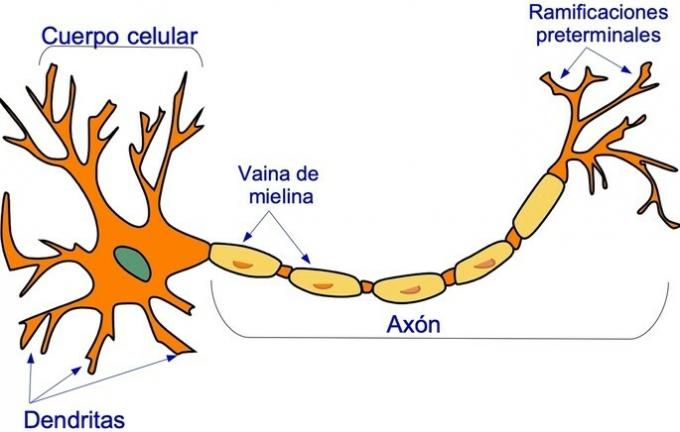
The neuron is the nerve cell par excellence. It is a eukaryotic cell that is characterized by having a cell body or soma from which extensions emerge, some short and branched, known as dendrites, and another long, which is called an axon.
Dendrites increase the possibility of receiving contacts from other neurons. The axon can vary in size, from a few millimeters to more than a meter. Preterminal branches are formed at the end of the axon, ending in the terminal bulb or synaptic button.
2. neutrophil
The neutrophil is a type of white blood cell or leukocyte, the cells responsible for protecting the body from invading agents. It is a eukaryotic cell that has a nucleus divided into lobes joined by chromatin strands, which is why they are also called polymorphonuclear cells.
Neutrophils measure between 10 and 15 µm and are found circulating in the blood. They are actively moving and have a high capacity for phagocytosis to capture and destroy particles. The cytoplasm has granules that enclose enzymes that digest different compounds.
3. Red blood cell or erythrocyte
The red blood cell or erythrocyte is the cell responsible for the transport of oxygen, from the lungs to the tissues, and carbon dioxide, from the tissues to the lungs. This function is fulfilled thanks to hemoglobin, a protein that has iron.
It is the only cell in the human body that does not have a nucleus, because it loses it when it enters the blood. It originates in the bone marrow from hemopoietic stem cells (forms blood cells). When the maturation process ends, it passes into the blood circulation where it fulfills its function as a gas carrier.
4. Spermatozoon
The sperm is the male gamete of most animals. It is a haploid eukaryotic cell, that is, it has half the genetic load of the species. It is usually characterized by a small body with a long tail, which gives it mobility.
Sperm are produced in the testicles of mammals. Its main function is to participate in fertilization, by fusing with the ovum.
5. ovum or oocyte
The ovum is the female gamete of animals and plants. Like the sperm, it is a haploid cell with half the chromosomes of a somatic cell. It is a large, spherical cell with a large nucleus.
Eggs are produced in the ovaries, the female reproductive organ. Participates together with the sperm in fertilization.
6. megakaryocyte
The megakaryocyte is a very large cell found in the bone marrow. It is characterized by a large polyploid nucleus, that is, it has a chromosomal load greater than 2 sets of chromosomes (2n), it can reach 64 n.
The main function of the megakaryocyte is the formation of platelets, which are responsible for the process of hemostasis and blood coagulation.
7. melanocytes
They are the cells that produce melanin, the pigment that gives skin its color. These are found in the epidermis and in the hair follicles.
The melanocyte has a rounded cell body from which extensions extend between the other cells of the skin. It is the only cell with a specific organelle, the melanosome, where melanin synthesis occurs.
8. smooth muscle cell
Smooth muscle cells are found in blood vessels, in the respiratory tract, and in the digestive tract. They are the cells responsible for the expansion and contraction of these organs.
They are elongated, with sharp ends, of variable size. They usually appear in groups, forming layers of cells. They have a nucleus that is also elongated in the direction of the cell. The cytoplasm is occupied by actin and myosin filaments, responsible for cell contraction.
9. adipocyte
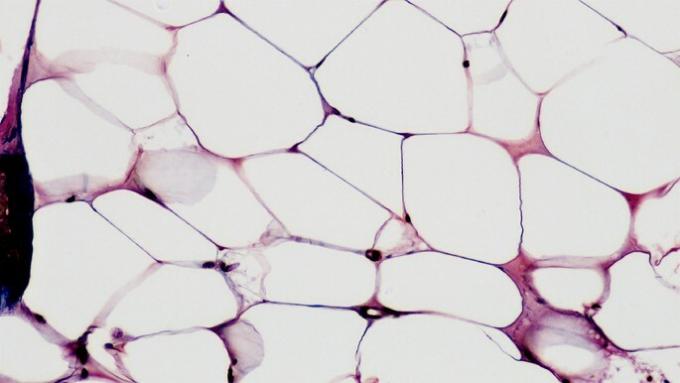
They are very large cells, with the nucleus flattened against the plasma membrane and a fine line of cytoplasm surrounding a large lipid droplet. Its function is to store fat.
Adipocytes are found clustered in adipose tissue, which represents a fifth of the weight of a person with a healthy weight.
10. parietal cells of the stomach
These cells are found in the glands of the stomach. They are large and rounded, their core is round and central. It has many mitochondria and small intracellular channels are observed in the cytoplasm.
Parietal cells are responsible for the secretion of hydrochloric acid in the stomach. They also produce the "intrinsic factor" that promotes the absorption of vitamin B12.
11. Saccharomyces cerevisiae

Saccharomyces cerevisiae yeast is a unicellular eukaryotic organism, belonging to the kingdom of fungi. It is known as yeast because it is responsible for the production of bread, as well as wine and beer.
You may also be interested in seeing aerobic and anaerobic respiration.
12. Candida albicans
The Candida albicans It is a yeast from the kingdom of fungi. It is found harmlessly in the intestines and skin of humans, but can become pathogenic in immunocompromised people. It is the agent responsible for fungal infections such as canker sores and vaginal infections.
13. Penicillium roqueforti
the species Penicillium roqueforti It is the fungus that gives Roquefort cheese its characteristic appearance. It is a saprophytic fungus, that is, it feeds on decomposing organic matter. It is found in soils and woods in forests.
14. Trypanosoma brucei
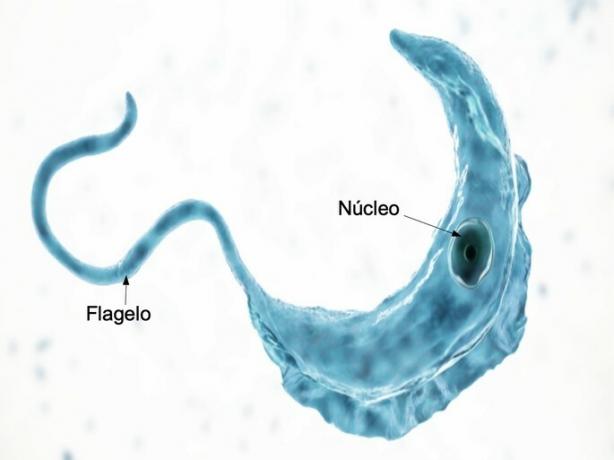
The Trypanosoma brucei It is a protozoan parasite that causes sleeping sickness in Africa. It is a eukaryotic cell with a nucleus, mitochondria, and a cytoskeleton that gives it the characteristic elongated shape. Its mobility is due to its single flagellum.
This parasite is transmitted between mammals by the tsetse fly. When the fly bites an infected animal, the protozoan passes into the insect's intestine and then into its salivary glands, ready to infect another animal in the next bite.
In mammals, the parasite survives in the bloodstream by hiding from the immune system.
15. Haloquadratum walsbyi
This is an archaea, a prokaryote of the kingdom Archea, whose most striking feature is the square or rectangular shape. It was discovered in 1980 in Egypt.
The haloquadratum it is halophilic, that is, it likes to live in environments with high levels of salt. That is why it is easy to find it in the saline lakes of the world.
16. Nanoarcheum equitans
They are prokaryotic cells of the kingdom Archea. It is the smallest archaea discovered so far, with a diameter of 350 to 500 nanometers (almost 10 times smaller than a bacterium).
It lives in association with another archaea, the ignicoccus hospitalis, From whom do you get the lipids? The genome of N. equitans It is one of the smallest detected.
17. Entamoeba gingivalis
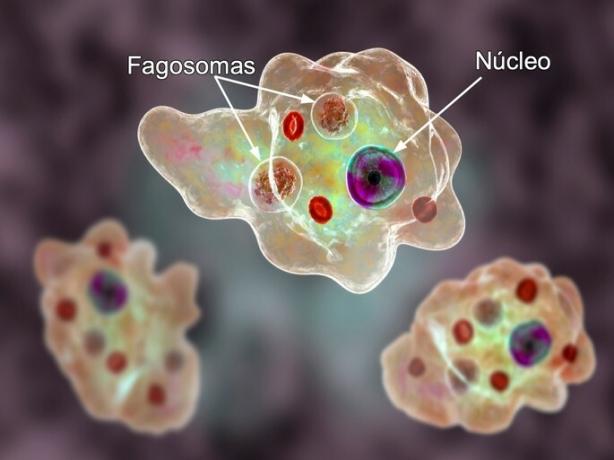
The Entamoeba gingivalis It is a eukaryotic protozoan. This amoeba emits pseudopodia to move around and catch its food, which will then be digested in the phagosomes.
The AND. gingivalis it has been found parasitizing in the mouths of humans, sometimes causing gum disease.
18. Vibrio cholerae
It is the causative agent of cholera, a disease that causes watery diarrhea. It is an example of a prokaryotic cell that does not have a nucleus.
The v. cholerae It is a Gram-negative bacterium, with a characteristic coma bacillus shape and a polar flagellum, which gives it great mobility.
You may also be interested in seeing archaea and bacteria.
19. Escherichia coli
Probably the Escherichia coli It is the best known bacterium. It belongs to the family of intestinal bacteria, so its presence is associated with contamination by feces.
The AND. coli It is a Gram-negative, cylindrical bacterium, easy to cultivate in the laboratory and fast growing. It is used for genetic recombination experiments.
20. Streptococcus pneumoniae
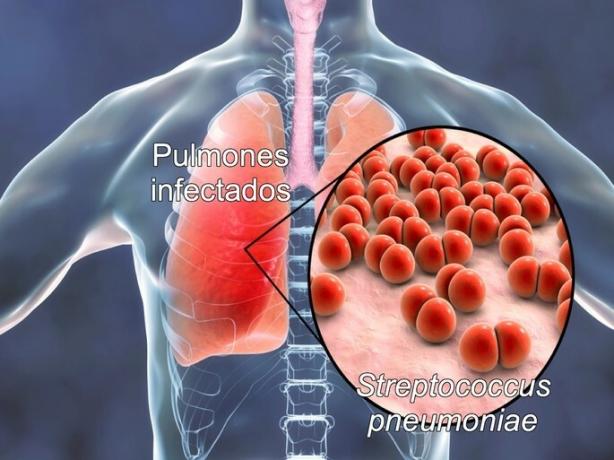
The Streptococcus pneumoniae or pneumococcus is a prokaryotic cell, belonging to the kingdom of bacteria. It is spherical or oval, less than 2 micrometers. They are usually found in pairs (diplococci) or small chains. It has a cell wall characteristic of Gram-positive bacteria.
Pneumococcus is responsible for infections such as pneumonia, meningitis, and otitis in humans.
21. plant parenchyma cells
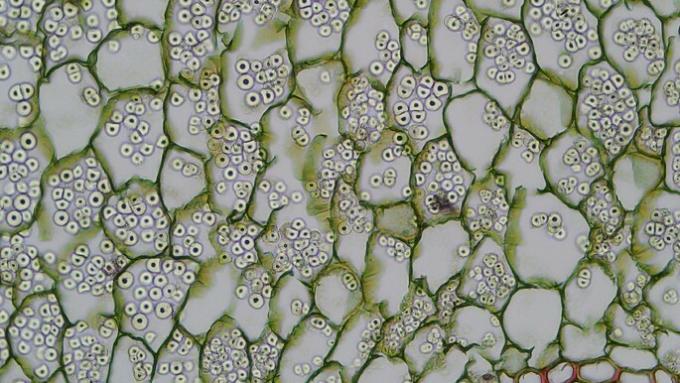
Parenchyma cells are plant cells that are characterized by having a very thin cell wall. We can get them in the petals, fruits, seeds and other soft tissues of the plant.
Parenchyma cells have the ability to divide by mitosis, so they are in areas of repair and growth. In some cases the parenchyma also serves as storage, as in the root of some plants where starch is deposited in granules.
You may also be interested in seeing Monocots and Dicots.
22. vorticella
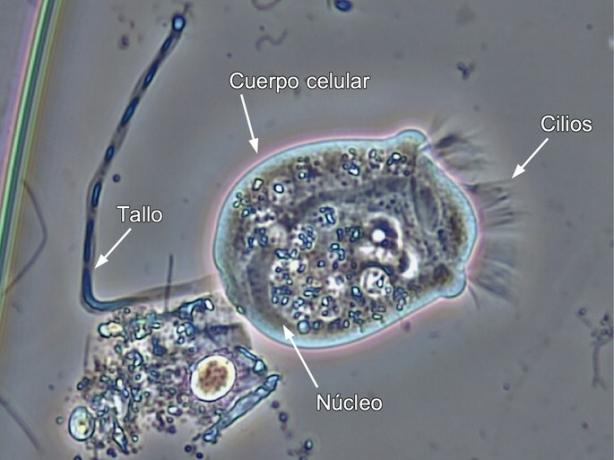
The vorticella is an example of a unicellular eukaryotic cell. It belongs to the kingdom of protozoa and is characterized by having a bell-shaped cell body, with two bands of cilia in the mouth, and a stem. The cilia move to produce flows of water and catch its food, while the stem contracts and allows it to move in watery environments.
The vorticella it was first seen by Anton Leeuwenhoek, the inventor of the microscope. Recently, it is being used as a model for micromachines based on biological organisms.
References
Crang R, Lyons-Sobaski S, Wise R. (2019). Plant anatomy.- A concept-based Approach to the structure of Seed Plants. Springer. Swiss.
Geneser, F. (2005) Histology on biomolecular bases. 3ed. Pan American Medical Publishing House.
Matthews, K. R. (2005). The developmental cell biology of Trypanosoma brucei. Journal of cell science, 118(2), 283-290.
Ryu, S., Pepper, R.E., Nagai, M., France, D.C. (2017) Vorticella: a protozoan for Bio-Inspired Engineering. Micromachines, 8:4. Doi: 10.3390/mi8010004


